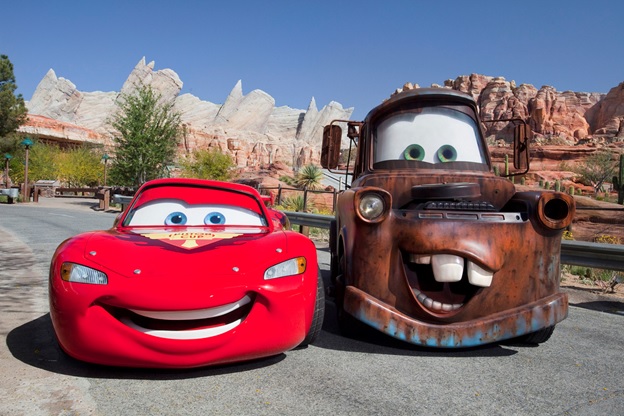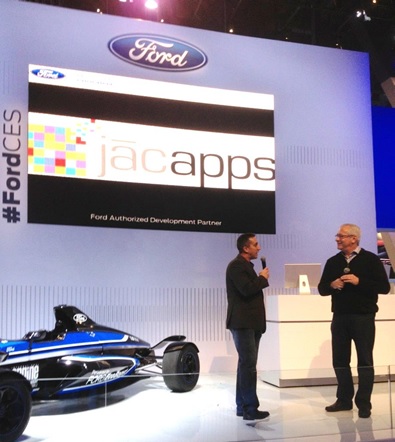
Just a few years ago, Paul and I would mention “connected cars” to broadcasters, and the reaction would be a shrug or even an eyeroll. While everyone acknowledged the importance of the car as a primary radio listening center, the technology baked into “center stacks” didn’t seem to have a whole lot of relevance to an industry where radio always ruled the dashboard.
But over the years, radio has gained a stronger understanding of what’s at stake. Now everyone’s talking about “connected cars” and their implications to the radio business. Ecosystems like Apple’s CarPlay and Alphabet’s Android Auto are now also a part of the story as the two tech giants that created these platforms battle it out for dashboard dominance.
Enter autonomous cars – coming sooner than anyone thought – may not even be equipped with radios, motivating consumers to bring along their own media to their self-driving car commute.
And then there’s the Internet of Things – the technology where smart gadgets of many different varieties talk to each other – cars, security systems, refrigerators, and other devices that are interconnected to one another.
Now add Artificial Intelligence to the mix, and you have a new dimension that impacts the radio industry’s ability to effectively function as an in-car marketing tool. Radio has always been a “windshield medium,” broadcasting commercial ads and promos for local businesses.
But now, new technology threatens to change the equation as the car itself becomes an active predictor of behavior, mood, and emotions. You may already receive Google Maps notifications on your phone, noticing you’re starting your commute, and providing unanticipated traffic updates for your usual route to work.
This is just the beginning of how AI will work to connect your personal dots in cars. The automakers are all over this because the technology increases the value of their computerized vehicles to advertisers hungry for direct ROI for their businesses.
We saw this on our CEO/CES tour back in January. NVIDIA‘s cool technology in Teslas features eight cameras, but not all of them are focused on the road and the world outside the car. An internal camera studies and analyzes the driver’s facial reactions– all of which go into analyzing and measuring the driving experience from the human point of view.
Just as in radio, emotion is playing an increasing role in how automakers calculate what it means to drive from Point A to Point B. Ford has now partnered with RWTH Aachen University in Germany, a group that tracks gestures and eye movements to anticipate the need to use the climate controls or answer the phone.
Ford’s Colin Smith was recently quoted in The Detroit News about how cars will become better observers of their drivers:
“We’re looking at how to use those pieces of technology to understand the emotions of the person, and primarily to give the driver a more rich interaction with the voice commands of the vehicle.”
 Ford is now integrating Amazon’s “Alexa” to better connect voice with driver needs. A company called Nuance Communications has partnered with Ford to develop more sophisticated voice recognition in the company’s SYNC ecosystem.
Ford is now integrating Amazon’s “Alexa” to better connect voice with driver needs. A company called Nuance Communications has partnered with Ford to develop more sophisticated voice recognition in the company’s SYNC ecosystem.
This will facilitate the car anticipating whether the driver might be enticed to buy flowers on Mother’s Day or stop to pick up a favorite dessert along the route.
Nuances’s Fatima Vital calls it “the empathetic car,” which can read your mood, tell you a joke, remind you of birthdays, or pull up a favorite song.
As the cars we drive begin to actively suggest consumer options via directions, coupons, and other means, in-car advertising as we know it will undergo change. To stay relevant, radio will have to create integrated packages, while seeking out strategic partnerships that can align its in-car usage with technologies like these that are rapidly making their way into dashboards and online computer systems.
One way to get this going is for the radio industry to better connect with the automotive world, something that we have continued to foster via our DASH Conferences and our mobile app development company, jācapps. Understanding the mindset, needs, and priorities of automakers is a first step in relationship-building and learning.

Here’s a positive step: at the Radio Lunch at next month’s NAB Show, Ford’s Global Lead for Business Development and Partner Management, Scott Burnell, will keynote.
Scott was one of our first contacts at Ford when we forged our app development partnership. Scott led the creation of Ford’s SmartDeviceLink platform, allowing for the integration of apps in dashboards that retain radio’s all-important branding needs.
And as far as the radio business is concerned, Scott is an empathetic guy.
But that doesn’t mean NAB attendees will love everything he has to say. Scott will pull no punches, but he will help radio broadcasters realistically understand the opportunities and challenges that lie ahead. After being on numerous panels with Scott over the years, I can assure you he won’t just talk about automotive technology. While the hardware and software are a big part of the story, so is radio’s local roots and its connection to the audience.
As cars gain an increasing sense of “emotional intelligence” from drivers, it is essential that radio simultaneously develop a better understanding of an automotive industry that is experiencing seismic change. It starts with broadcasters making the investment – not just in dollars – but in time and in an openness to learning that can make a true difference in its automotive relationship.
Cars are getting smarter. Broadcasters need to get smarter, too.
- What Is It With Female Robot DJs? - April 30, 2025
- Why “Dance With Those Who Brung You” Should Be Radio’s Operating Philosophy In 2025 - April 29, 2025
- The Exponential Value of Nurturing Radio Superfans - April 28, 2025




If cars can learn to sense our emotions and react to them, they’ll become (with apologies to Bill Burton) spouses with four wheels.
I’m sorry but this strikes me as kinda creepy.
It is kind of creepy, but to many, that’s how autonomous cars feel (or felt) – and they’re coming whether we like it or not. It will take technologists and marketers time to integrate AI into our gadgets in a way that is helpful without being obtrusive. But it’s coming. Thanks, Bob.
Another industry that might be able to teach radio a lesson would be grocery. When you walk into the “super stores” there’s a reason that huge snack display is at the end of the aisle. How did Campbell’s get to display 25 of their soups, but Progresso only 10? There’s a reason for that-and if radio wants to be noticed (and it needs to) we need more “end of the aisle” presence-which is important in dealing with the car industry too. The novelty of “the empathetic car” will wear off someday-but will radio still have a place after all is said and done? Regardless of the delivery system (online, IP, transmitters and towers), radio has to continue to evolve and be relevant in content-and find new ways to be..noticed.
Dashboard visibility is important, Dave. And so is producing content that drivers truly want to hear. It is content and distribution. I think a big potential challenge of cars that are AI-driven is that sales will be impacted. Thanks for being a part of the conversation.